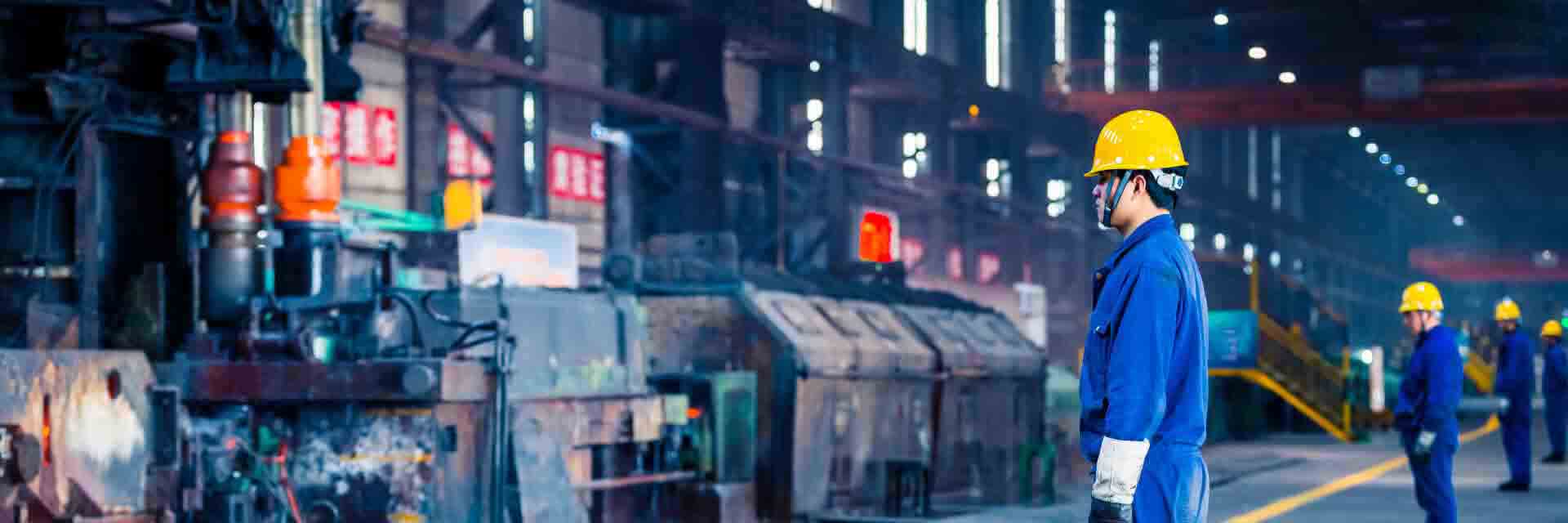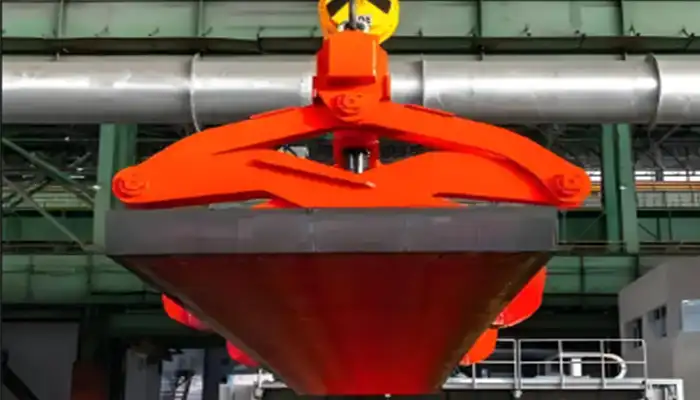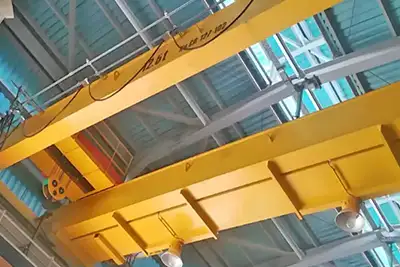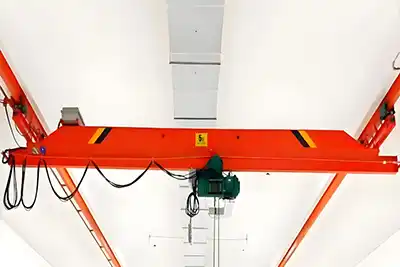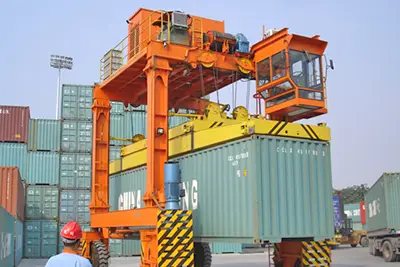Why Your Input Matters in Steel Handling Crane Specs
Overhead Crane Specification Checklists for Steel Bars, Pipes, Slabs, and Coils—Why Accurate Buyer Inputs Ensure Safe and Efficient HandlingIntroduction
Handling steel products in any plant or workshop is a heavy job. Overhead cranes play a key role here. They make lifting, moving, and placing steel bars, pipes, slabs, and coils easier and safer. Without the right crane, handling these heavy materials would be slow, risky, and costly.
But not all overhead cranes are the same. Choosing or designing the right crane depends a lot on the specific steel products you handle. That’s why providing accurate and detailed information about your steel products is so important. Your inputs help ensure the crane can handle the weight, size, and special needs of your materials. This avoids delays, damage, or accidents during operation.
Let’s quickly look at the common steel products overhead cranes deal with:
- Steel Bars: Usually long and straight, these come in different sizes and weights. They might be handled as bundles or single bars.
- Steel Pipes: Hollow and often heavy, pipes need careful handling to avoid bending or damage. Their diameter and wall thickness vary widely.
- Steel Slabs: These are flat and heavy plates of steel. Slabs can be hot or cold, which changes how they must be handled safely.
- Steel Coils: Rolled sheets of steel, coils are round and bulky. They require special lifting tools to keep them stable and undamaged.
Knowing these basics helps you give the right specs for your crane. The better your inputs, the better the crane will fit your needs. This saves you money and keeps your operation running smoothly.
Different Steel Products and Their Handling Challenges
When it comes to steel handling, each product type brings its own set of challenges. Overhead cranes must be designed or chosen to meet these specific needs. Let’s dig into two common steel products: steel bars and steel pipes.
Steel Bars
Steel bars are one of the most common steel products in workshops and mills. They usually come in long, straight shapes. Here’s what you need to know:
- Typical Sizes and Weights: Steel bars vary a lot in length—from a few meters up to 12 meters or more. Their thickness and weight also differ depending on the type and grade of steel. A bundle of bars can weigh several tons.
- Shapes: Bars can be round, square, or rectangular in cross-section. Some bars might have irregular shapes depending on their application.
- Handling Specifics: Usually, steel bars are handled in bundles, not one by one. This means your crane must be able to lift the total weight of a full bundle safely. The surface of the bars can be rough or smooth, which affects the grip needed from clamps or magnets. Rough surfaces might need special clamps to avoid slipping.
Key Points:
- Confirm if bars are bundled or handled individually.
- Know the maximum bundle weight and length.
- Check surface condition for clamp or magnet choice.
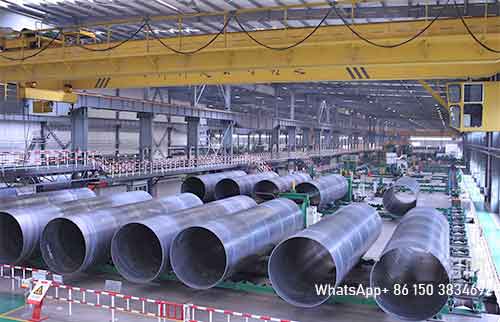
Steel Pipes
Steel pipes are hollow tubes used in many industries. Handling pipes requires extra care because their hollow structure can make them vulnerable.
- Common Dimensions and Weights: Pipes come in various diameters, from small (a few centimeters) to very large (over a meter). Lengths can be similar to bars, often around 6 to 12 meters. Pipe weights depend on diameter, wall thickness, and length, and can range from a few hundred kilograms to several tons per piece.
- Handling Notes: Because pipes are hollow, they can bend or get damaged if lifted incorrectly. Overhead cranes must use the right clamps or slings designed for pipes. These tools should spread the load evenly to avoid deformation. Also, pipes are often bundled, so cranes should handle the total bundle weight safely.
Key Points:
- Know pipe diameter, wall thickness, and length.
- Use clamps or slings designed for pipe shape.
- Avoid lifting methods that can deform the pipes.
- Consider whether pipes are handled singly or in bundles.
Handling steel bars and pipes correctly requires knowing these details upfront. This helps you get the right overhead crane and lifting tools, ensuring safety and smooth workflow.
overhead crane for slab handling
Steel Slabs
Steel slabs are thick, flat blocks of steel used as raw material in steel mills. Handling slabs comes with its own unique challenges.
- Size Variability and Weight Considerations: Slabs can vary a lot in size. Typical lengths range from 4 to 8 meters, widths from 1.5 to 2.5 meters, and thicknesses from 0.15 to 0.3 meters. Because of their size and thickness, slabs can weigh anywhere from 8 to 25 tons each. This wide range means cranes must be designed with enough capacity and safety margin for the heaviest slabs you handle.
- Handling Specifics: One big factor is whether the slabs are hot or cold. Hot slabs come straight from the furnace and can be glowing hot—handling these requires special heat-resistant clamps and extra safety measures. Heat radiation from hot slabs can also affect crane components, so the crane must be designed with heat protection in mind.
Cold slabs, on the other hand, are easier to handle but may have surface scale or rust that affects the grip of lifting tools. The surface condition can change how clamps or magnets are chosen and used.
Key Points:
- Confirm max slab size and weight for crane capacity.
- Specify whether slabs will be hot or cold during handling.
- Consider heat-resistant features for hot slab handling.
- Note surface conditions for the right clamp or magnet choice.

Steel Coils
Steel coils are rolled sheets of steel wound into large, heavy rolls. They are common in steel processing and require careful handling.
- Weight and Diameter Variations: Coils come in a range of diameters, from under 1 meter up to 3 meters or more. Weight can vary from around 2 tons to 30 tons depending on thickness and size. These large weights mean cranes must have suitable lifting capacity and stability features.
- Handling Challenges: Stability is the biggest challenge when handling coils. Since they are round and bulky, coils can roll or shift if not properly supported. Using the right slings or clamps is crucial to keep coils secure during lifting.
Deformation is another risk. If lifting forces are uneven or clamps don’t distribute pressure properly, coils can get damaged, which affects quality and resale value.
The crane’s lifting attachments must be designed to match coil size and weight, often with padded or shaped clamps to avoid damage.
Key Points:
- Know coil weight, diameter, and width for safe crane design.
- Use proper sling or clamp attachments to ensure coil stability.
- Avoid uneven lifting forces to prevent coil deformation.
- Confirm if coils will be lifted singly or in bundles.
Handling steel slabs and coils properly starts with providing these important details. The right crane and lifting tools make your operation safer and more efficient.
Why Your Inputs Matter: Impact on Overhead Crane Design and Safety
When it comes to overhead cranes, your input isn’t just a nice-to-have — it’s critical. The details you provide about the steel products you handle directly shape the crane’s design, safety, and overall performance. Here’s why your information really matters.
How Detailed Product Info Influences Crane Capacity and Design
The crane’s lifting capacity must match or exceed the heaviest load it will lift. If you only give rough estimates or incomplete details, the crane might be under- or over-designed.
- Under-design: The crane might fail to safely lift your heaviest products, leading to accidents or equipment damage.
- Over-design: The crane will cost more than necessary, making your investment less efficient.
Beyond capacity, your inputs affect the design of the lifting mechanisms — the hoists, trolleys, and girders. For example, knowing product sizes and shapes helps decide the crane span, lift height, and hook approach. Without clear specs, the crane may not fit your workspace or meet your workflow needs.
Importance of Selecting the Right Lifting Attachments
Different steel products need different attachments to be handled safely:
- Clamps work well for bars, pipes, or slabs with flat or rough surfaces.
- Magnets are often used for steel plates or slabs but depend on surface condition and slab temperature.
- Slings and hooks are flexible but require careful use to avoid damage or slipping.
Your input on product surface, temperature, and bundle size helps choose the right tool. Using the wrong attachment can cause product damage, crane downtime, or safety risks.
Ensuring Safety Through Precise Inputs
Safety depends on accuracy. The crane must handle the exact weights and sizes you specify, including any bundles or special conditions like heat or surface finish. Even a small error in weight or size can overload the crane or cause lifting failures.
By giving precise specs, you help:
- Prevent accidents caused by overloading or unstable lifting
- Avoid damage to the products or crane
- Maintain smooth, uninterrupted operation
Cost Implications of Inaccurate or Incomplete Specs
Providing unclear or incomplete information may seem easier, but it often costs more in the long run. Here’s how:
- Unexpected downtime due to crane failure or repairs
- Extra modifications or retrofits if the crane doesn’t fit your needs
- Product damage costs from improper handling
- Higher maintenance expenses due to stressed components
In contrast, clear, detailed inputs help suppliers design or recommend cranes that perfectly fit your needs, reducing overall costs and boosting productivity.
Key Specification Checklist Categories
When specifying an overhead crane for steel product handling, it helps to break down the key details into clear categories. Each category covers important factors that affect crane design, safety, and performance.
Load Capacity
The most critical factor is the maximum load your crane will need to lift. This includes:
- The heaviest single product, whether a steel bar, pipe, slab, or coil
- The combined weight if products are lifted in bundles or groups
- Any safety margin or buffer weight recommended for unexpected loads
Be precise with weights. Overestimating can increase cost, while underestimating risks safety and damage.
Span and Lift Height
These dimensions define the crane’s physical reach and clearance:
- Span: The distance between the crane runway beams or rails. It must cover your workspace width, including any extra for product stacking or movement.
- Lift Height: The vertical distance the crane hook needs to travel. This depends on your building height and how high products are stacked or stored.
Knowing accurate measurements ensures the crane fits well and operates without obstruction.
Lifting Speed and Frequency
How fast and often the crane lifts matters a lot for your production:
- Lifting speed: Faster speeds help speed up handling but can affect control and safety.
- Duty class: This defines how frequently the crane will be used and how heavy the loads are over time (e.g., light, medium, heavy duty).
- Cycle time: How long it takes to complete a typical lift-and-move operation.
This info helps design the crane’s motor power and mechanical systems to match your workflow and avoid wear.

round billet handling crane with clamp
Handling Attachments
The type of attachment depends on the product shape, surface, and temperature:
- Clamps: Ideal for irregular or bundled loads, rough surfaces, or hot materials.
- Magnets: Best for flat, clean surfaces like steel plates or cold slabs. Not suitable for hot slabs unless specially designed.
- Slings and hooks: Flexible but need careful use to avoid slipping or damaging products.
Specify what lifting attachments you plan to use or need. This guides crane hook design and safety features.
Environmental Factors
Where and how the crane is used affects its design and components:
- Indoor or outdoor use: Outdoor cranes need weatherproofing and corrosion resistance.
- Temperature: Extreme heat (like near hot slabs) or cold can impact materials and electronics.
- Dust and moisture: Harsh environments require sealed motors and controls.
- Hazardous areas: If your site handles flammable or explosive materials, explosion-proof cranes and parts are necessary.
Make sure to describe your environment clearly for the right crane protection.
Power Supply and Installation Constraints
These details affect crane operation and installation feasibility:
- Voltage and phase: Crane power must match your facility’s electrical system (e.g., 380V 3-phase).
- Runway beam setup: Details on beam type, spacing, and mounting method impact crane design.
- Space limitations: Low ceilings, narrow aisles, or other obstacles require special crane configurations.
Providing these specs upfront ensures smooth installation and trouble-free operation.
Filling out each of these checklist categories carefully helps suppliers design or recommend an overhead crane that fits your exact needs — making handling steel products safer, easier, and more cost-effective.
Product-Specific Quick Reference Checklists (Examples)
To make things easier, here are quick reference checklists for common steel products. These highlight typical sizes, weights, and handling notes you can use when specifying overhead cranes.
Steel Bars
- Typical Size Ranges: Length: 4 to 12 meters Cross-section: Round, square, rectangular, usually 10 mm to 200 mm thick
- Bundle Weights: Bundles often weigh between 1 to 5 tons, depending on size and quantity
Handling Notes:
- Bars are usually lifted in bundles, not individually
- Surface can be rough or smooth—choose clamps accordingly
- Confirm if bars are hot or cold, which affects grip and safety
- Avoid lifting uneven bundles to prevent load shifts
Steel Pipes
- Diameter Ranges: From 20 mm up to 1200 mm or more
- Wall Thickness: Typically from 2 mm to 20 mm, depending on application
- Weight: Single pipes range from a few kilograms to several hundred kilograms, with bundles weighing multiple tons
Clamp Types:
- Pipe-specific clamps that distribute pressure evenly
- Padding to prevent deformation
- Avoid chain slings without protection to prevent damage
Handling Notes:
- Hollow structure makes pipes prone to bending—use correct clamps
- Handle in bundles for efficiency but check total weight
- Consider surface condition (painted, rusty, oily) for grip choice
Steel Slabs
- Size Ranges: Length: 4 to 8 meters Width: 1.5 to 2.5 meters Thickness: 0.15 to 0.3 meters
- Weight: Typically between 8 and 25 tons per slab, depending on size and steel grade
Hot/Cold Condition:
- Hot slabs require heat-resistant clamps and safety measures
- Cold slabs may have surface scale affecting clamp grip
Safety Margins: Always include a 20–30% safety margin over the max slab weight for crane capacity
Handling Notes:
- Clarify if slabs will be lifted individually or bundled
- Heat radiation from hot slabs impacts crane design
- Surface condition affects clamp or magnet choice
Steel Coils
- Diameter: Usually between 0.5 to 3 meters
- Weight: Coils range from 2 tons up to 30 tons depending on thickness and width
Stability Considerations:
- Coils are round and can roll—secure clamping is crucial
- Use padded or shaped clamps designed for coil stability
- Avoid uneven lifting to prevent deformation or damage
Sling Specs:
- Use coil slings or special C-hooks designed for coils
- Avoid direct hook lifting unless coil is supported properly
Handling Notes:
- Confirm if coils are handled singly or stacked
- Surface finish (oily, clean) can affect grip choice
- Environmental conditions (wet, dusty) may require special coatings on clamps
These quick references help buyers and users gather and provide the right details early in the crane selection process. This leads to safer, more efficient steel product handling.

magnetic overhead crane for steel plate handling
How to Provide Your Inputs Effectively
Giving accurate and complete information to your crane supplier makes all the difference. It ensures the crane you get is safe, efficient, and fits your exact needs. Here’s how to prepare and communicate your inputs well.
What Data to Prepare Before Inquiry
Before you reach out to a crane supplier, gather all the key information about your steel products and handling needs. This will help the supplier understand your requirements and recommend the best solution.
- Product Dimensions: Length, width, diameter, thickness, and height of the steel products you handle (bars, pipes, slabs, coils).
- Weights: Maximum weight of individual items and bundles. Include any safety margin or expected variation.
- Product Condition: Are the products hot or cold? Surface conditions like rust, paint, oil, or scale? Any special handling needs?
- Handling Details: How products will be lifted — individually or bundled? Type of lifting attachments preferred or currently used?
- Workspace Measurements: Workshop or yard size, crane span, lift height, and any height or space restrictions.
- Environmental Conditions: Indoor/outdoor, temperature range, dust, moisture, or hazardous area classification.
- Power Supply Info: Voltage, phase, frequency, and availability of electrical infrastructure for crane operation.
Common Pitfalls and Overlooked Details
Many buyers miss some details that cause issues later. Here are some common pitfalls to avoid:
- Underestimating Weights: Don’t guess or use average weights; provide max weights including bundled loads.
- Ignoring Product Temperature: Handling hot slabs or pipes without noting temperature can lead to wrong crane or clamp selection.
- Forgetting Surface Conditions: Rust, oil, or scale can affect clamp grip or magnet efficiency.
- Not Clarifying Handling Frequency: Crane duty class depends on how often and how fast you lift loads. Missing this leads to premature wear.
- Overlooking Environmental Factors: Dust, moisture, or explosive atmospheres require special crane features. Not mentioning these can be dangerous.
- Missing Installation Constraints: Low ceilings, narrow aisles, or runway beam details affect crane design. Don’t leave these out.
Collaborating with Your Crane Supplier for Customized Solutions
Once you’ve prepared your data, work closely with your crane supplier:
- Ask Questions: Don’t hesitate to clarify anything you’re unsure about. Suppliers can guide you on what info matters most.
- Share Photos or Drawings: Visuals of your products, workspace, or current handling setup help suppliers understand your situation better.
- Discuss Special Needs: If you need explosion-proof cranes, heat-resistant clamps, or custom spans, make sure to tell your supplier early.
- Request a Site Visit: If possible, invite the supplier for a site inspection. They can check conditions firsthand and offer better recommendations.
- Review Draft Designs: Ask for design sketches or proposals before finalizing. Review them carefully to make sure all specs are covered.
By collaborating closely, you help your supplier deliver a crane tailored to your exact handling challenges — saving time, money, and headaches.
Providing your inputs clearly and completely is the first step to a successful overhead crane project. Take the time to get it right, and you’ll get a crane that works perfectly for your steel products.
Conclusion
When it comes to overhead cranes for steel product handling, thorough and accurate inputs are not just helpful — they’re essential. The right information about your products and handling environment directly impacts crane safety, performance, and lifespan.
Providing detailed specs helps ensure that:
- The crane capacity matches your heaviest loads
- Lifting attachments suit your specific steel products
- Environmental and installation conditions are properly addressed
- The crane operates smoothly and reliably for your production needs
Inaccurate or incomplete information can lead to costly mistakes, delays, and even dangerous situations. So, taking the time upfront to gather and share the right data saves you trouble down the road.
We highly encourage you to use the product-specific checklists and key specification categories we covered here. They serve as a great communication tool between you and your crane supplier. Clear communication means:
- Better tailored crane designs
- Faster quotations and approvals
- Fewer surprises during installation and operation
If you’re ready to move forward or just want to ask questions, don’t hesitate to contact your crane supplier. Many suppliers offer free consultations to help you define your needs and provide the best solutions. A good supplier will work with you closely to create a crane specification perfectly matched to your steel handling challenges.
Your inputs matter. Getting them right means safer, smoother, and more efficient steel product handling — every single day.

